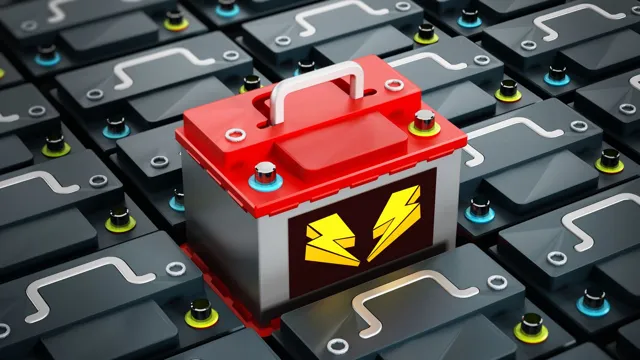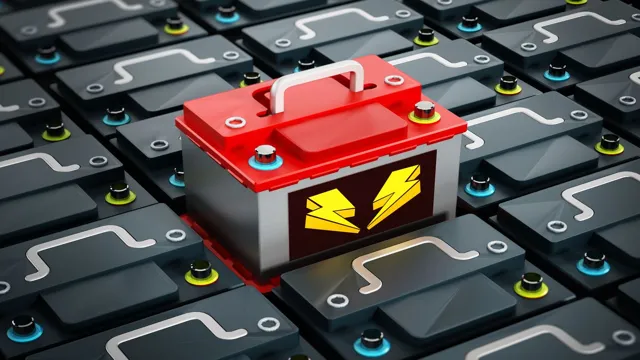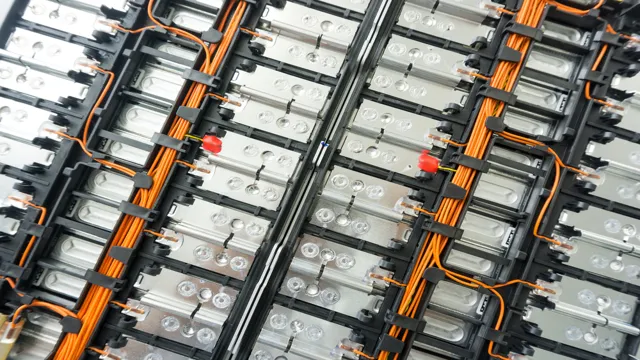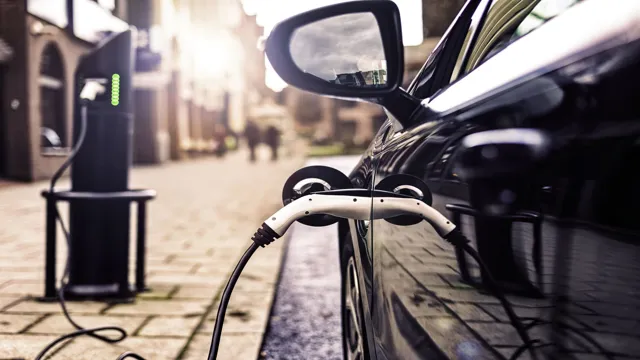Why Electric Cars Run Out of Juice: Understanding and Solving the Empty Battery Problem
Electric cars have become increasingly popular in recent years, and for a good reason. Not only do they help reduce carbon emissions, but they’re also a relatively low-cost alternative to traditional gas-powered vehicles. However, with every new technology comes new challenges, and electric car batteries are no exception.
One of the most common concerns people have is what to do when an electric car battery runs out of charge. Unlike a gas tank, you can’t just pull over to the nearest gas station and fill up. But fear not, there are plenty of solutions to this problem.
So, if you’re an electric car owner or thinking of becoming one, keep reading.
Overview of Electric Car Battery
Electric cars are becoming increasingly popular due to their eco-friendliness and high fuel efficiency. However, one of the biggest concerns for electric car owners is the possibility of an empty battery. Electric car batteries are lithium-ion batteries that store energy, allowing the vehicle to run.
These batteries can last anywhere from 8 to 12 years, depending on the type of battery and the number of charging cycles. If an electric car runs out of battery, the owner must either find a charging station or plug it into a regular outlet. It can take several hours to fully charge an empty battery, which is why planning for charging stations on long trips is essential for electric car owners.
With the rise of electric cars, advancements in battery technology continue to make them more efficient and reliable, reducing concerns about running out of battery. However, it’s important to always monitor battery levels and plan for charging stops to ensure a smooth driving experience.
How an Electric Car Battery Works
An electric car battery is the heart of any electric vehicle, responsible for powering its motor and all of the peripherals that make it work. Unlike the lead-acid batteries found in conventional cars, electric car batteries are usually constructed from lithium-ion cells. These cells use an electrolyte solution to move ions between a cathode and an anode, generating a flow of electricity that can be used to power the car.
Since electric car batteries are rechargeable, they can be charged using external sources like wall-mounted charging stations or regenerative braking. Regenerative braking is a technology that converts the kinetic energy of a moving vehicle into electrical energy, which is then stored in the battery and used to power the car. With advances in battery technology allowing electric cars to travel further on a single charge, and charging infrastructure growing rapidly, it is no wonder that electric vehicles are becoming more popular all the time.
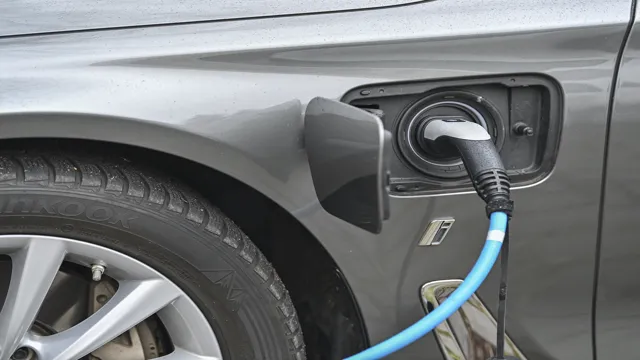
Why Your Electric Car Battery May Be Empty
Electric car batteries have become increasingly popular, due to the desire to reduce carbon emissions and save money on fuel costs. However, one common issue that electric car owners face is the battery running out of charge quicker than expected. This can be due to a number of reasons, including extreme temperatures, driving style, and battery age.
High temperatures can cause the battery to drain faster, while aggressive driving and frequent high speeds can also decrease the battery life. Additionally, if the battery is older or has been charged frequently, its capacity to hold charge decreases over time. It is important for electric car owners to be aware of these factors and take steps to mitigate them, such as parking in shaded areas, driving at moderate speeds, and not overcharging the battery.
By being proactive, electric car owners can extend the life of their battery and ensure that it is always ready to go when they need it.
What to Do When Your Electric Car Battery is Empty
If you find yourself with an empty electric car battery, don’t worry, there are plenty of options to get you back up and running. Firstly, check your surroundings for charging stations or nearby car dealerships that offer charging services. If you don’t have access to any of those, plan your route to the nearest charging station using a mapping app or website.
Sometimes a simple phone call to the station or even a local tow truck company can help direct you to a possible solution. It’s always a good idea to keep your car charged ahead of long drives, but if you do find yourself in this situation, don’t panic – there are always ways to get back on the road.
Safety Measures When Dealing With an Empty Battery
When dealing with an empty electric car battery, there are several safety measures you should take to avoid any potential hazards. Firstly, find a safe and appropriate place to carry out any maintenance work. This could include a garage, a driveway, or a parking lot with enough space for your car and tools.
Once you have found a suitable location, ensure the car is in a stationary position and the hand brake is engaged. Next, turn off all electrical systems to prevent any potential fire risks caused by short circuits. You should also wear protective gloves and eye goggles to avoid any exposure to harmful battery acids.
More importantly, if you are not confident handling batteries or performing repair work, it is best to leave it to a professional mechanic. They have the necessary training, skills, and equipment to safely replace and dispose of your empty battery. By taking these safety measures, you can avoid potentially dangerous situations and keep yourself and your car safe.
Ways to Charge Your Electric Car Battery
Electric car batteries have revolutionized transportation, but they do require charging to function. If your electric car battery is empty, there are a few ways to recharge it. The most common method is plugging it into an electric vehicle charging station.
These stations can be found in various locations and can charge your battery from 0 to 80% in as little as 30 minutes. Another option is charging at home using a dedicated charging unit. These units can connect to a standard outlet or be hardwired to your home’s electrical system for faster charging.
Finally, some electric cars can be charged using a portable Level 1 charging cord that can be plugged into any standard outlet. Remember to plan your route ahead of time as the distance between charging stations can vary. Overall, charging your electric car battery is easy if you have the right tools and knowledge.
How Long it Takes to Fully Charge an Electric Car Battery
Electric car batteries have become increasingly popular, but many are still unsure about the time it takes to charge them fully. The answer, of course, varies depending on the specific model and charging station used, but most electric cars take anywhere from 4 to 8 hours to charge completely. To streamline the process, it’s essential to know what to do when your electric car battery is empty.
First, locate a charging station nearby and ensure that your electric car is equipped with the correct charging plug. Once connected, the charging process will begin automatically. Patience is key, as it may take some time.
Keep in mind that charging an electric car is not the same as filling up a gas tank; the process is more gradual and requires time to reach a full charge. To make it less of a hassle, consider finding public charging stations or installing a dedicated charging station at home. By planning ahead and being patient, you can ensure that your electric car battery stays full and ready to go for your next adventure.
Tips to Extend Your Electric Car Battery Life
If you’re driving an electric car, chances are you’ve experienced the dreaded “empty battery” warning at least once. While it can be frustrating, there are steps you can take to extend the life of your electric car battery. One of the most important things to remember is to avoid fully draining your battery whenever possible.
If you constantly run your battery down to zero, it can cause irreversible damage that will shorten its lifespan. Instead, aim to keep your battery between 20-80% charged, which will also help you get the most out of your car’s driving range. Additionally, try to avoid exposing your car to extreme temperatures, especially in direct sunlight, as this can also cause damage to the battery.
By taking these simple steps, you can help extend the life of your electric car’s battery and enjoy many more miles of emissions-free driving.
Maintenance Tips for Your Electric Car Battery
Electric car batteries are a significant investment, and it is essential to maintain them properly to extend their lifespan. One easy way to do this is to avoid letting your battery drain completely. It strains the battery and can cause permanent damage over time.
If possible, plug in your car before the battery reaches a critically low level. Additionally, it is best to avoid exposing your electric car battery to extreme temperatures. High heat or cold can reduce battery life, so park your car in a garage or shaded area on hot days.
Regularly servicing your car and having a professional technician inspect your battery can also prevent problems and extend its life. Proper maintenance of your electric car battery not only saves you money but also promotes a more sustainable environment as an electric car’s battery life is a crucial factor in reducing carbon emissions. By following these tips, you can help keep your electric car running smoothly and extend the life of its battery.
Driving Habits that Affect Your Electric Car Battery Life
As electric cars become more popular, it’s important to understand how your driving habits can affect the lifespan of your electric car battery. Here are some tips to help extend the life of your electric car battery. Firstly, avoid letting your battery run down to 0%, as this can cause damage over time.
Instead, try to keep your battery between 20% and 80% charge for optimal longevity. Secondly, avoid fast charging as much as possible, as this can also decrease the overall lifespan of the battery. While it may be tempting to charge quickly on a road trip, taking a bit more time to charge at a slower rate can pay off in the long run.
Lastly, try to drive at a steady and consistent pace, as frequent acceleration and deceleration can also wear down the battery faster. By following these tips, you can help your electric car battery last longer, saving you time and money in the long run.
Conclusion: Empty Battery? Not A Problem For Your Electric Car
When your electric car’s battery is drained, it’s like a heart without a beat. It may seem like the end of the world, but fear not. Just like how CPR can revive a heart, a charger can bring your electric car back to life.
So charge up, and get back on the road, knowing that you’re doing your part to save the planet and staying ahead of the fossil fuel curve.”
FAQs
How do I know if my electric car’s battery is empty?
Most electric cars come with a battery indicator that shows the charge level of the battery. You can also check the estimated range remaining on your car’s dashboard.
How long does it take to charge an empty electric car battery?
This depends on the size of your battery and the charging speed of the charging station. For example, a typical electric car can take 5-6 hours to charge from empty on a level 2 charger.
What should I do if my electric car battery dies?
If your electric car battery dies, you will need to have it towed to a charging station or charging point. Make sure you always have a charging plan in place before you go on long drives.
Can I jumpstart an electric car with an empty battery?
No, you can’t jumpstart an electric car like you can with a traditional gasoline-powered car. If your electric car’s battery is empty, you will need to charge it before you can start the car again.
